Planting a tree is often the most common practice when thinking about recovering a degraded ecosystem. However, ecosystems are very diverse. For this reason, reforestation is not a panacea. There is no unified recipe for restoring all ecosystems. Depending on the characteristics of the site to be intervened, the actions to be implemented are different.
This is the case of the moorlands. This ecosystem, a source of water, is not a forest. Although it has patches of trees, most of its vegetation consists of herbaceous plants, rosettes and shrubs. Therefore, in its context, one cannot speak of reforestation.
Unfortunately, scientific criteria related to: site of seed origin, genetics, seed management, habitats, ecosystem functionality, substrate properties, among others, are not always taken into account.
Aware of this reality, the Water Protection Fund (FONAG), through its Vegetation Cover Recovery Program (PRCV), implements innovative ecological restoration actions to recover high Andean moorlands and forests.
Ecological restoration actions are those that seek to recover the original ecological functionality of a degraded site, in the medium and long term. In the context of the moorlands, these actions seek to obtain healthy ecosystems with vegetation cover, soil dynamics, functioning food chains, carbon storage, and appropriate water regulation.
Currently, the PRCV manages several restoration strategies. Active restoration is one of them, through the production and planting of native plants, native to the moorlands to be intervened, representative in terms of biological and genetic richness. In other words, they are several plant species that possess genetic material obtained from a diverse and suitable population.
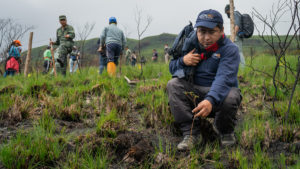
Description: Planting activities with native plants
On the other hand, passive restoration actions are also implemented, which consist of eliminating external factors so that the affected site can recover by itself. Biophysical restorations through the containment of slopes with dikes and planting of plants; and complementary restorations such as: live fences, windbreaks or firebreak lines, among the most commonly used.
To guarantee the quality and genetic diversity of the plants used, FONAG has a genetic seed bank for each area, which works with phenological criteria. Thus, the flowering, fruiting and collecting times of the species can be defined. We do not work with stems or cuttings because, being clones, they do not guarantee an appropriate genetic variability in the future. In addition, FONAG works actively with community nursery owners who, through theoretical and practical training, have become strategic allies and a key link in the chain of vegetative propagation to restore and conserve water sources.
Activating the resilience capacity (adaptation to change) of an ecosystem after being disturbed or degraded by human activities is a complex task. To rehabilitate the original environmental conditions of an ecosystem, and thus restore its natural and socioeconomic value, many actions and actors are required.
It is precisely there where the financial and logistical support of PROAmazonía has been decisive. Since FONAG and PROAmazonía signed an inter-institutional cooperation agreement in May 2017, the scope and impact of the processes of conservation and recovery of vegetation cover has been enhanced; mainly on the eastern flank of the Andes Mountains. Sites with great influence on the hydrological and ecological regulation of the upper basins of some Amazonian rivers.
To know if all the effort invested is producing the expected results, FONAG has a robust impact monitoring mechanism. Through it, performance indicators are obtained that allow to show and enhance positive results, as well as correct those that are not so satisfactory. In other words, a philosophy of continuous improvement is used, based on applied science and technical experience.
To date, under the agreement with PROAmazonía, ecological restoration interventions have been carried out in: the Tambo Valley located within the Cayambe Coca National Park (10,000 Polylepis incana plants over 10 hectares); Jamanco in the Papallacta parish (10,000 Polylepis incana plants); Oyacachi with 9.7 hectares recovered; and Antisana with 45 hectares in the Antisana river basin.
Product of technical and scientific rigor, the survival rate of the plants used is very high. In addition, thanks to the ecological restoration actions implemented in certain sectors affected by hundreds of years of practices such as agriculture, cattle ranching and overgrazing – located within the Antisana Water Conservation Area and the Antisana Ecological Reserve – wind and water erosion processes that affected these important water sources have been halted, as well as reducing the variation in the water table of a high Andean peat bog (Pugllohuma wetland).
Although the recovery of the high Andean moorlands and forests is slower compared to other ecosystems, very satisfactory results have been obtained so far, reflected in the recovery of vegetation cover, soil dynamics, functioning of food chains, biodiversity, carbon storage, and water quality and quantity, to name a few. However, the true magnitude of the impact of these actions will be seen in detail in the long term. For the time being, the germinated seeds augur a prosperous future.
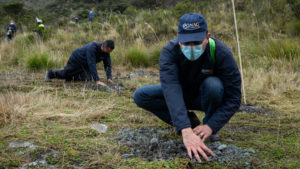
Summary: With the support of PROAmazonía, FONAG implements innovative ecological restoration actions to guarantee healthy and functional high Andean ecosystems.
Featured: Recovering the original environmental conditions of an ecosystem is a complex task that requires several actions and actors.
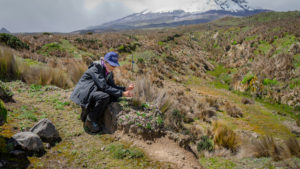
Description: Planting activities with native plants
Description: Ecological restoration actions of the Vegetal Cover Recovery Program (PRCV).
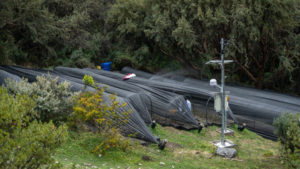
Photographs: Diego Ribadeneira
Description: FONAG native plant greenhouses in Antisana Reserve
Author: Diego Ribadeneira, FONAG Environmental Communicator.
 Español
Español English
English
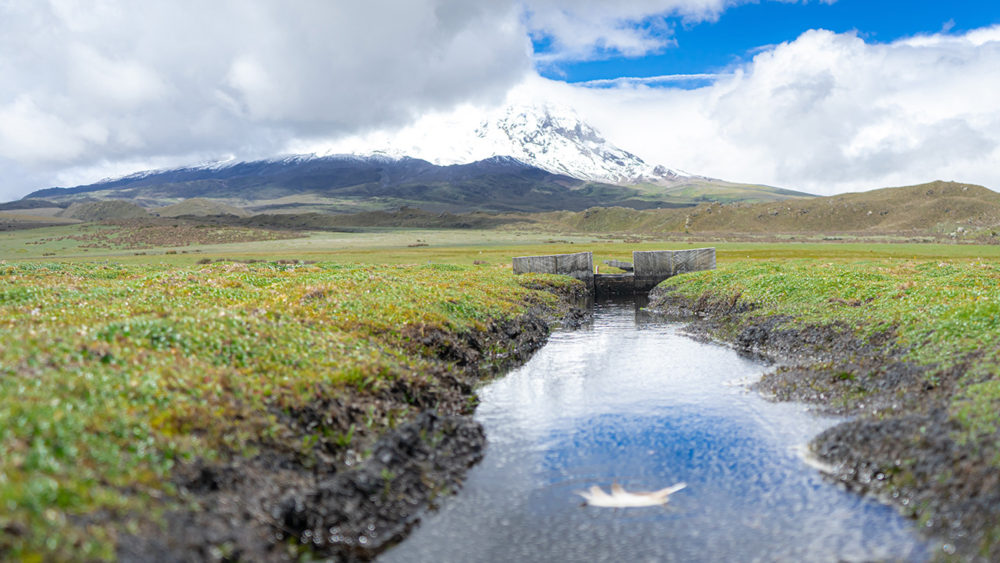
Comments are closed.